CPF is set to rev up cage-free egg production to meet increasing demand from the food service industry and consumers who are concerned about animal welfare, according to Banjerd Homboonma, vice-president of CPF.
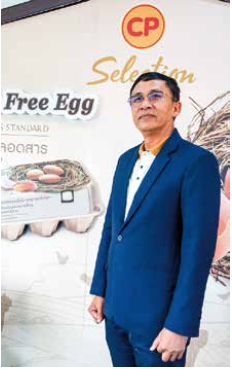
“The quality of CPF cage-free eggs is identical to premium imported Japanese eggs that are odor-free and can be eaten raw. But our eggs are fresher and the price is remarkably cheaper,” said Mr Banjerd.
CPF’s cage-free production strategy was conceived to meet the future needs of the food industry. International food companies and hotels, for example, Nestle, Unilever, Hilton and more have declared 2025 as their deadline to begin sourcing cage-free eggs for their supply chains.
In Thailand, UK retailer Tesco will sell only cage-free eggs by 2030.
Aside from complying with rigorous cage-free standards and animal welfare guidelines, another big obstacle is coming up with enough volume to ensure customers have access to an uninterrupted supply. This requires so much patience and capital that only a few producers are up to the task, said Mr Banjerd.
At present, CPF produces around five million cage-free eggs/year, but could boost that figure to 30 million using the current capacity of Wang Somboon Farm in Saraburi, 100 km northeast of Bangkok. The farm, originally built in 2002 as a broiler breeder farm, covers 22.8 hectares.
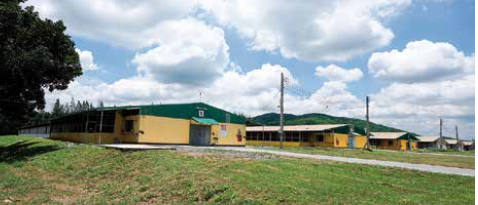
Production
In cage-free production, layer and pullet houses are thoroughly cleaned and disinfected before rearing starts.
A single-age production system is used. The layer chicks come from the same source and are moved to production houses at 16 weeks of age. The pullets familiarize themselves with the new house for around two weeks before laying starts.
Currently, there are three layer houses (12x120m) with 20,000 birds in total. At present, this creates a sufficient supply of eggs of all sizes to supply customers for the whole year.
There is also a pullet-growing house using a floor-rearing system with evaporative cooling, deep litter, roosts and other enrichments.
The chicks receive infrared beak treatments at the first week of age to limit injuries from feather pecking and the risk of cannibalism.
They are reared in closed houses to prevent insecticide contamination and intestinal worms.
The breeding stock is tested to ensure that they are free of salmonella. Management aims to minimize salmonella risks due to genetics, age, and stress induced by overcrowding. A pest control program keeps out wild birds and rodents.
The PS hatchery is fully automated to keep the operating crew to a minimum and prevent human error and contamination. Pulse sensors have replaced candling to sort out infertile eggs on day 18 when the eggs are moved from setters to hatchers. The newly hatched male chicks have lighter coloured down than the females, which are darker.
The male chicks are disposed of humanely in line with animal welfare guidelines.
The birds are generally healthier. Feed consumption is increased in line with the extra freedom of movement that the birds enjoy, and a culling age of 72 weeks is recommended by Thailand’s Egg Board.
Cost of quality
Cage-free production costs more because eight times fewer birds can be housed in the same space than with conventional battery cage production. This is a major obstacle because most customers are far from happy to pay even twice the price of conventional eggs, said Mr Banjerd.
Rearing density is five birds/sq m, which is less than the recommended seven birds/sq m. Floor space is 1,100 sq cm/ bird.
Feeding space for pan feeders is 4.3 cm /bird and there are 1.25 nipple drinkers for every 10 birds. The birds are fed ad lib. Rice husks are used as litter material.
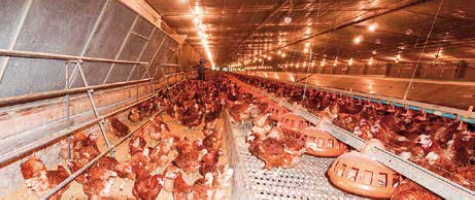
Perches are installed 20 cm from the wall, with 30 cm between perches. Perching space is 15 cm/bird.
There is a common nest area. A 100-metre-long group nest runs from the front to the rear of the house. Various nest types are being tested to find out which types work best.
Feeders and drinkers are placed above the slats to encourage the birds to jump up and use the nests.
The goal is to make the nest area the most attractive spot for the hens to lay eggs in order to keep floor eggs less than 1% of the total. About 1.4 m2 of nest space is available for every 120 hens, again a figure more generous than the recommended EU standard of one sq m/120 birds.
Each stockman looks after 7,000 birds compared to 200,000 under a typical caged production system. Manure accumulates under the 50-cm slats and is removed from the house at the end of the production cycle.
Staff regularly inspect the flock a few times/day to remove dead birds.
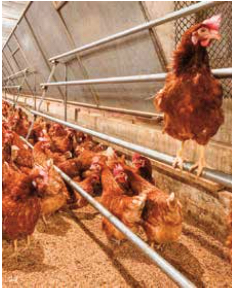
CPF is using Hyline brown due to its all-around egg quality, exemplary haugh unit which is above 90%, and superior egg shell quality. The birds are fed a vegetarian corn-soy diet. No antibiotic growth promoters are supplemented in the feed.
To match the growth in antibiotic-free production, CPF is preparing to create a market for antibiotic-free premium spent hens.
The eggs are sorted on site primarily to eliminate those with misshapen, dirty and defective egg shells. They are subsequently sent to CPF’s common grading facility in Nakorn Nayok, 90 km away from the farm via refrigerated trucks for cleaning, UV disinfection and grading. The grading machine can automatically detect blood spots and cracks.
The QC team at the grading facility takes eggshell swabs every day to test for the presence of salmonella. They also monitor egg shell thickness, egg shell strength, haugh unit, egg weight, yolk colour and more.
CPF exports around 3% of its total output to stabililize domestic prices and some 10% of the total production is set aside for processed eggs. At present, the company produces around six million eggs/ day.
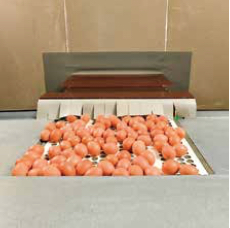
In the table egg market, CPF is penetrating further into modern trade outlets and other niches such as food services operator Horeca. It also offers small packages that better fit the needs of today’s smaller families.
For processed eggs, it is developing new customers such as makers of tofu and bakeries. CPF supplies 10,000 tonnes of liquid eggs/annum to buyers in the domestic market.
Sustainable farming
CPF recently started to renovate its layer operations where the gist of the new investment is to create good relations with communities nearby. All CPF farms now have dust and ammonia traps behind the exhaust fans to minimize odours and environmental disturbances.
It is also pursuing a zero waste goal, with major investments in biogas reactors that use layer manure as a feedstock. It has also improved manure handling to minimize ammonia content so that it does not disrupt methanogenesis microbes. New techniques have enabled CPF to generate three times the methane yield of conventional layer-manure based fermentation.
“This is the biggest leap forward for layer biogas in the country in the last 20 years,” he said.
Thailand began capturing biogas using two decades ago using mainly hog manure. Since then, layer biogas has always been seen as slower and less efficient, but new production methods are closing the efficiency gap, he added.
CPF uses self-contained layer complexes. Each complex houses around 500,000 birds and all of them contain their own egg grading facilities and pullet and layer houses. The latest complex was built at Chantaburi and the largest complex with one million birds is located in Jana, Songkhla.
CPF is always ready to raise capacity in line with market demand. It recently launched cage-free eggs in four-egg packages at 2,000 7-11 stores in the Bangkok area, and now supplies Michelin-star Jay Fai restaurant and DonDon:Donki.
